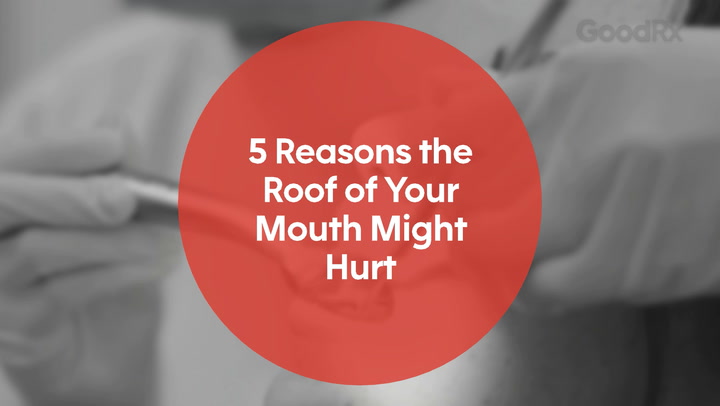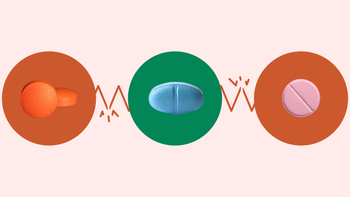What Causes Foot Pain? Plus Ways to Treat It
Key takeaways:
A wide range of health issues can cause foot pain. These can include injuries, medical conditions, and even aging.
You may be able to manage mild foot pain with simple self-care measures. More intense foot pain may need other treatments, like medications or physical therapy.
If foot pain starts suddenly, persists, or comes with other symptoms, you should get medical care right away.
Table of contents

Foot pain is hard to ignore, especially because your feet support your body and absorb shock when you walk. It can affect one or multiple parts of your foot, including your heels, toes, arch, or soles. Many people live with this problem every day. In fact, research estimates that 75% of people in the U.S. will have some kind of foot pain at some point in their lives.
Foot pain can disrupt your quality of life and even lead to long-term disability. That’s why it’s important to look at common causes and treatments for your foot pain.
Types of foot pain
Foot pain can feel different depending on the cause. Some common types of foot pain include pain caused by:
An injury
Nerve issues
Inflammation
Foot movement, position, or alignment
Save every month on GLP-1 meds with GoodRx
Save an average of $235 on FDA-approved GLP-1s like Ozempic and Zepbound.

What are the most common causes of foot pain?
There are many reasons why your feet might hurt. Some common causes of foot pain include:
Footwear: Wearing shoes that don’t fit well or don’t support your feet can cause pain. High-heeled shoes might also be a problem because they can increase the pressure on your feet.
Age: Research suggests that one in four older adults have foot pain. That’s because your feet change as you get older. For example, the tissues in your feet may become looser, and your arches may fall, both of which can lead to pain.
Larger body size: Having a larger body size or being diagnosed with obesity has been linked to poor foot function and pain.
Overuse: Repeated stress on your feet from activities like prolonged standing or playing a sport, may cause pain or discomfort.
Injury or illness: Many injuries or health conditions can cause pain in your feet.
What types of injuries or deformities can cause foot pain?
Certain injuries, foot or toe deformities, and repeated stress can also cause foot pain. Examples include:
Bunions: A bunion is a bump that forms on the joint at the base of your big toe. It develops over time from too much pressure on your toe.
Ingrown toenails: Cutting your toenails too short can lead to an ingrown toenail. This happens when your nail bends down and digs into your toe, usually on the big toe.
Calluses and corns: Calluses and corns are thick, hard patches of skin that are usually caused by pressure or friction. Corns are typically small and round, while calluses tend to be larger and vary in shape.
Plantar warts: Plantar warts are small growths on the bottom of your feet caused by human papillomavirus (HPV). These warts are most common in children and teenagers and usually go away on their own.
Achilles tendonitis: The largest tendon in your body, the Achilles tendon connects your calf muscles to your heel. Achilles tendonitis develops when it gets inflamed, causing painful swelling and irritation.
Hammertoe: This happens when your toe bends upward at the middle joint, causing pain while walking. It can be caused by things like the shape of your foot and the shoes that you wear.
Claw toe: This foot deformity causes toes to bend down in a claw-like shape. Claw toe can also cause calluses and foot pain. It’s more common in older people but can be a sign of nerve problems in younger people.
Metatarsalgia: Metatarsalgia refers to pain in the ball of your foot, around the metatarsals (the bones that connect your middle foot to your toes). It can be caused by too much pressure, overuse, or foot abnormalities.
Heel spur: Often caused by repetitive strain, a heel spur occurs when calcium deposits form a bony growth on the bottom of your heel.
Foot fracture: There are multiple types of foot fractures. Symptoms of a fractured or broken foot include varying levels of pain, swelling, and trouble putting weight on your foot.
Flat foot: Also called pes planus, this common deformity is when the arch of your foot is low or missing. Flat feet can lead to foot, knee, hip, or back pain.
Foot sprain: A foot sprain is when the ligaments around your foot bones are stretched or torn. It can cause pain, bruising, swelling, and difficulty walking.
Stress fracture: Stress fractures are small cracks in your bone and happen because of repeated forces or strain in your foot. Symptoms include pain that gets worse with activity, tenderness to the touch of the affected bone, and relief with rest.
What health conditions can cause chronic foot pain?
Chronic foot pain may also be triggered by a health condition, such as:
Plantar fasciitis: Repetitive strain or overuse may lead to plantar fasciitis, one of the most common causes of foot or heel pain. Stretching the plantar fascia, which is a thick fibrous tissue that connects your heel to your forefoot, can help it resolve.
Osteoarthritis: Osteoarthritis occurs when the bone and cartilage in your joints wear down over time. It can cause aching, stiffness, and swelling in your feet.
Rheumatoid arthritis: Rheumatoid arthritis often starts in small joints, including your feet, making it painful to walk.
Psoriatic arthritis: Psoriatic arthritis is an autoimmune disease that causes inflammation in your skin, joints, spine, and tendons. It leads to pain and stiffness that commonly affect your hands and feet.
Gout: Another form of arthritis, gout usually affects your knee and big toe joints first. It’s characterized by the rapid onset of joint pain, swelling, and warmth.
Diabetic neuropathy: With diabetic neuropathy, high blood sugar levels damage nerve endings and blood vessels. It results in poor circulation and diabetes-related foot pain.
Tarsal tunnel syndrome: Nerves in your ankle pass through a small space called the tarsal tunnel, allowing your foot to move or flex. With tarsal tunnel syndrome, one of those nerves is compressed as it passes through the tunnel. It can cause burning or numbness in your heel, arches, and toes.
Morton’s neuroma: This condition causes thickened tissue around a nerve between your toes. People with Morton’s neuroma often say it feels like walking with a pebble in their shoes. It usually causes pain in the ball of the foot or between the third and fourth toes.
Bursitis: Bursitis is inflammation of the bursae, which are sacs filled with fluid that cushion the tissues around your joints. There are many bursae around your feet. But bursitis most commonly affects the ball of your foot or the back of your heel.
How do you treat foot pain?
The treatment for foot pain depends on what’s causing it. For example, if you have an underlying condition like rheumatoid arthritis, a healthcare professional may start by treating that condition first. They may also recommend or prescribe the following treatments:
Custom-made shoe inserts called orthotics to take pressure off sore spots
A cast, brace, or night splint to keep your foot in a neutral position to prevent more pain
An assistive device, such as a cane, to help take pressure off of your foot when you walk
Physical therapy to help your foot heal and regain function
Anti-inflammatory medications like nonsteroidal anti-inflammatory drugs (NSAIDs) or corticosteroids
Medications like gabapentin and pregabalin that target nerve pain
Surgery, which is often a last resort
Do your feet hurt after standing for a long time? Here are some ways to soothe your foot pain if you have to stand all day.
Can you get arthritis in your feet? Yes. Here’s how it happens and what you can do about it.
Bunions can cause significant foot pain. These exercises can help you get some relief.
In some cases, there may be other treatment options too, like extracorporeal shockwave therapy. But again, treatment options depend on the cause of your foot pain.
What are the best ways to relieve foot pain at home?
Depending on the cause, you may be able to relieve your foot pain at home using the RICE method. This involves:
Rest: Stop or reduce your activity until your foot pain gets better.
Ice: Put ice on your foot for 10 to 15 minutes at a time, up to 3 or 4 times a day.
Compress: Wrap your foot with an elastic bandage or strap to reduce swelling and limit movement.
Elevate: Raise your foot above heart level while you apply ice or when you sit or lie down.
Other options include:
Take an over-the-counter NSAID, like naproxen or ibuprofen, to relieve pain.
Massage your feet to boost blood flow to the area and relax tight muscles.
You can also wear:
Cushioned shoe insoles that provide arch support
Shoes that fit well and match your activity
Shoes with a rocker bottom, which reduce stress on your joints and arches and provide you with a natural push-off with each step
When should you speak to a doctor about foot pain?
Be sure to get prompt medical care for foot pain that:
Starts suddenly and gets intense
Happens after an injury — especially if you can’t put weight on your foot and it bleeds, bruises, or swells up a lot
Shows signs of an infection, like an open or oozing sore that causes fever, redness, and swelling
Occurs alongside an inflamed and painful calf and shortness of breath
Is caused by a health condition that affects blood flow, such as diabetes or heart failure
May be related to a medication you’re taking
Doesn’t get better after a few weeks
Frequently asked questions
It depends on what’s causing your pain. For conditions like plantar fasciitis, foot exercises or stretches can help strengthen the muscles in your feet and relieve pain. But if your pain is from another injury or condition, you may have to rest or modify your activities for a while. A healthcare professional can help you figure out what’s causing your foot pain and if it’s safe to continue your activities.
Barefoot walking may help to improve foot strength and balance. For some people, shoes may affect the normal foot structure and function. But walking barefoot also has risks, like cuts, burns, injuries, or infections — especially if walking outside or in public spaces. People with diabetic neuropathy should avoid walking barefoot.
Foot pain is often due to problems affecting your foot itself. But rarely, it can be a sign of a more serious underlying condition. For example, peripheral arterial disease (PAD) is a cardiovascular condition that affects blood flow and can cause foot or leg pain. Foot pain can also be associated with other conditions such as:
Diabetes
Neuropathy
Arthritis
There are no scientific studies to support the use of Epsom salt for foot pain. But many people use Epsom salt soaks to relieve their joint pain. Avoid Epsom salt soaks if you have sensitive skin, open wounds, or burns. You should also avoid it if you have infections, excessive swelling, or numbness in your feet.
The bottom line
Various conditions or injuries can cause foot pain. Fortunately, you may be able to manage your pain with self-care measures, like foot soaks, massages, and gentle stretching exercises.
But if your pain doesn’t get better, it’s best to have a healthcare professional check out your symptoms and work with you on a treatment plan. This step is key if your symptoms are sudden or severe, or if they last for a long time.
Why trust our experts?



References
Almadhaani, H., et al. (2024). Transient pain and discomfort when wearing high-heeled shoes. Scientific Reports.
American College of Foot and Ankle Surgeons. (n.d.). Foot health facts for athletes.
American Podiatric Medical Association. (n.d.). Bursitis.
Besse, J. L. (2017). Metatarsalgia. Orthopaedics & Traumatology, Surgery & Research.
Bica, D., et al. (2016). Diagnosis and management of common foot fractures. American Family Physician.
Burke, L., et al. (2022). Ankle and foot overuse disorders. PM&R KnowledgeNow.
Butterworth, P. A., et al. (2015). The association between obesity and foot pain: Metabolic, biomechanical or both? Journal of Foot and Ankle Research.
Choo, Y. J., et al. (2020). Rearfoot disorders and conservative treatment: A narrative review. Annals of Palliative Medicine.
Golledge, J. (2022). Update on the pathophysiology and medical treatment of peripheral artery disease. Nature Reviews Cardiology.
Haddad, S., et al. (2021). Platelet-rich plasma or extracorporeal shockwave therapy for plantar fasciitis. International Journal of Burns and Trauma.
Kakagia, D. D., et al. (2023). The ageing foot. International Journal of Lower Extremity Wounds.
Kirkpatrick, J., et al. (2017). The plantar calcaneal spur: A review of anatomy, histology, etiology and key associations. Journal of Anatomy.
MedlinePlus. (2024). Foot pain.
MedlinePlus. (2024). Foot sprain - aftercare.
Menz, H. B. (2016). Chronic foot pain in older people. Maturitas.
Nagano, H., et al. (2018). Shoe-insole technology for injury prevention in walking. Sensors (Basel).
National Institute of Arthritis and Musculoskeletal and Skin Diseases. (2024). Sports injuries.
Occupational Health Clinics for Ontario Workers Inc. (n.d.). Working on your feet.
OrthoInfo. (2024). Claw toe.
OrthoInfo. (2021). Achilles tendon rupture (tear).
Orthopedic Associates. (2018). 25 facts about foot pain that you probably didn’t know.
Paavana, T., et al. (2024). Stress fracture of the foot - current evidence on management. Journal of Clinical Orthopaedics and Trauma.
Podiatric Medical Board of California. (n.d.). Information on orthotics “you don’t have to live with foot pain orthotics can help”.
Pollack, Y., et al. (2018). Manual therapy for plantar heel pain. Foot (Edinburgh, Scotland).
Raj, M. A., et al. (2023). Pes planus. StatPearls.
Rodriguez-Marchan, E., et al. (2021). Tarsal tunnel syndrome: Current rationale, indications and results. Efort Open Reviews.
The University of Chicago Medicine. (2019). Do our feet change in middle age: Common foot problems in adults and how to treat foot pain.
Thong-On. S., et al. (2019). Effects of strengthening and stretching exercises on the temporospatial gait parameters in patients with plantar fasciitis: A randomized controlled trial. Annals of Rehabilitation Medicine.

























